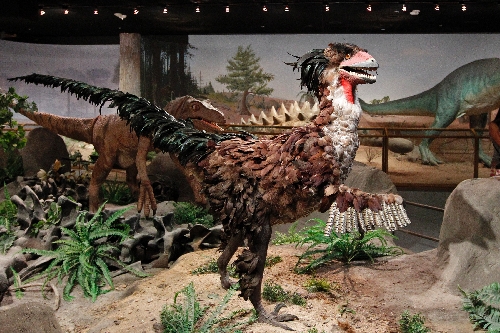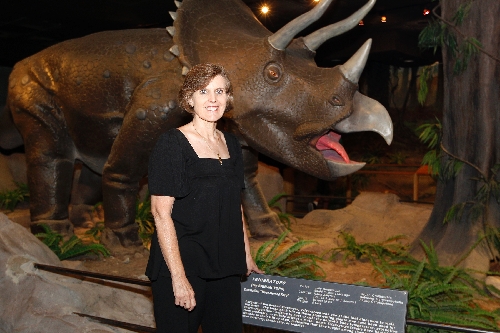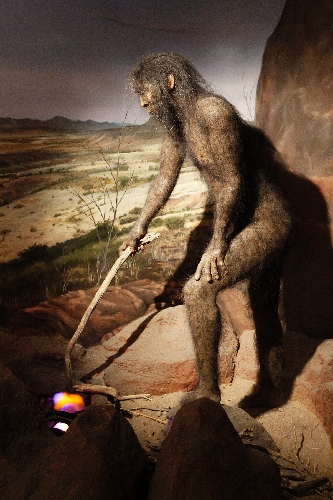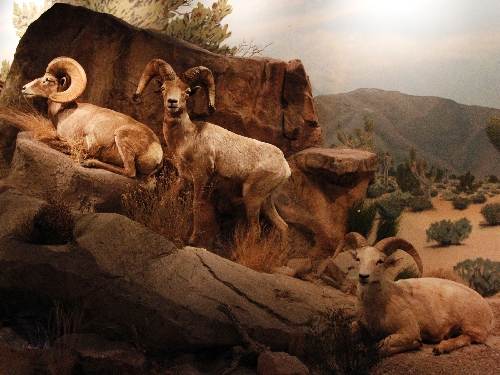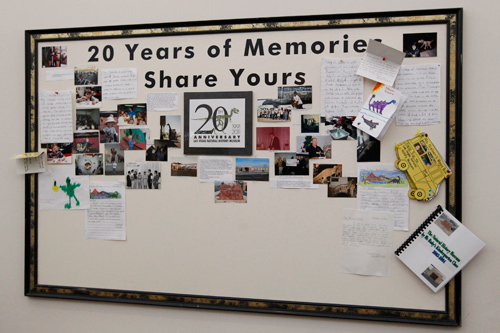Las Vegas Natural History Museum turns 20 with party Saturday
You'd think that being a museum director would be a fun gig. And, except for the snake story, Marilyn Gillespie would agree.
Bonnie, a Burmese python, is one of the live residents of the Las Vegas Natural History Museum, where Gillespie is executive director. One day, a museum volunteer told her that Bonnie somehow had gotten out of her cage.
Gillespie found Bonnie and picked her up, but didn't notice that Bonnie had clamped onto the cage with her very sharp, back-curving teeth. When Gillespie saw this, she let go of Bonnie immediately.
But not immediately enough for Bonnie.
"She got loose and stood up and looked me in the eye," Gillespie says. "That was the most scared I've ever been in my whole life, because ... they have a mouth full of teeth. And she was just looking at me."
Luckily, Bonnie decided not to attack Gillespie and lowered herself back to the floor. But, Gillespie says, "oh my gosh, my life passed before me. I would have had a lot of scars on my face if she had gotten me."
Bonnie, along with her mate, Clyde, still lives at the Las Vegas Natural History Museum and will be in attendance Saturday when the museum celebrates its 20th anniversary. Scheduled activities include face painting, "pin the tooth on the T-rex" and "triceratops horn toss" games, a scavenger hunt, free ice cream from Anderson Dairy, a food truck throwdown and, of course, viewings of the museum's exhibits.
Most notably, guests can take a look at the museum's latest acquisition: a rare Rhynchotherium skull, from a four-tusked elephant that lived 3 million years ago. The fossil was discovered in Arizona and was donated to the museum by the Joshua Reid Anderson Foundation.
For Gillespie, who was there from day one and is one of the museum's founders, the anniversary brings to mind 20 years' worth of memories. Gillespie recalls that the museum was created after another natural history museum, on the Strip, shut its doors.
Gillespie was part of a group of workers at that museum who "went to the city of Las Vegas and said, 'This is dying, but we really need to have a natural history museum in our community and in the city of Las Vegas.' "
City officials agreed and purchased a former Elks lodge at 900 Las Vegas Blvd. North to lease back to the new museum's board, which then began to raise money to gut the building and create a museum. But prospects of the new museum reaching its 20th anniversary seemed slim.
"When I would bring people down here before we opened, I'm going, 'OK, over here I'm going to do dinosaurs, and there I'm going to do this,' and people would look at me and go, 'Lady, you're not going to be here in six months' and walk out the door."
Progress came, but slowly.
"One of my first employees was an older man," Gillespie says. "As I was feeling very overwhelmed that first year, he said, 'Marilyn, if you can move it an inch, you can move it a mile.' So we've been moving inch by inch ever since."
Today, the museum includes galleries devoted to prehistoric life, international wildlife, geology, the African rain forest, Nevada flora and fauna, marine life and the treasures of Egypt. And there are dinosaurs, albeit not in the skeletal form seen at many such museums but, rather, covered with real-looking skin and with moving jaws and heads.
To celebrate the museum's two decades, Gillespie is asking patrons to share their own museum memories. Her favorite memory comes from a grandfather and his 6-year-old autistic grandchild.
The grandfather told Gillespie that the boy doesn't talk, but "just mumbles to himself." While visiting the museum, the boy "heard the sound of the dinosaur and he spoke. He said not just a word, (but) he went, 'Look out! Triceratops!'
"And they had never heard him speak. He had it inside of him, but it took the dinosaur to get it out. That's my all-time favorite."
The museum also features some living-and-breathing creatures, including snakes, eels, sharks and rays. Its very first live exhibit was an apparently dead gopher snake found by some museum workers.
"They thought it would be funny if they put it on my desk," Gillespie says. "So Monday morning comes, and I see a snake on my desk. I said, 'This is funny, guys, but it's not dead.' "
Gillespie took the not-dead-but-ailing snake to a veterinarian. But as the snake -- dubbed "Jake the Snake" -- was recovering, Gillespie discovered that "every person in this museum had this immense curiosity, like, 'Is it alive? Will it bite me? Is it venomous?' The questions were just nonstop."
Jake eventually became a popular fixture among museum guests and, Gillespie says, "a great educator on his own."
Those who haven't visited the museum in a while probably will notice some changes. This summer would be a great time to stop by, as the school groups that usually visit this time of year are absent because of Clark County schools' first across-the-board summer vacation in years, Gillespie notes.
Candace Kman and her daughter, Indigo, 5, stopped by on a recent weekday. Kman, a Clark County elementary school teacher, last visited about two years ago and said that "when we walked in here, there was so much more than there used to be."
Indigo, by the way, said she liked the dinosaurs the most. Was she scared? "A little bit," she admits, by "the big one."
Gillespie says that when she looks back on the museum's beginnings and "how incredibly difficult those first years were," she's "amazed" that it is turning 20.
Thanks to frugal spending and good planning, the museum is on solid financial footing today. But, Gillespie says, smiling, "looking back, I have shed a tear or two on the front steps."
Contact reporter John Przybys at jprzybys@review journal.com or 702-383-0280.
Preview
What: The Las Vegas Natural History Museum's 20th anniversary celebration
When: 9 a.m. to 4 p.m. Saturday
Where: 900 Las Vegas Blvd. North
Tickets: $5 adults, $2.50 children, 2 and younger free (384-3466)


